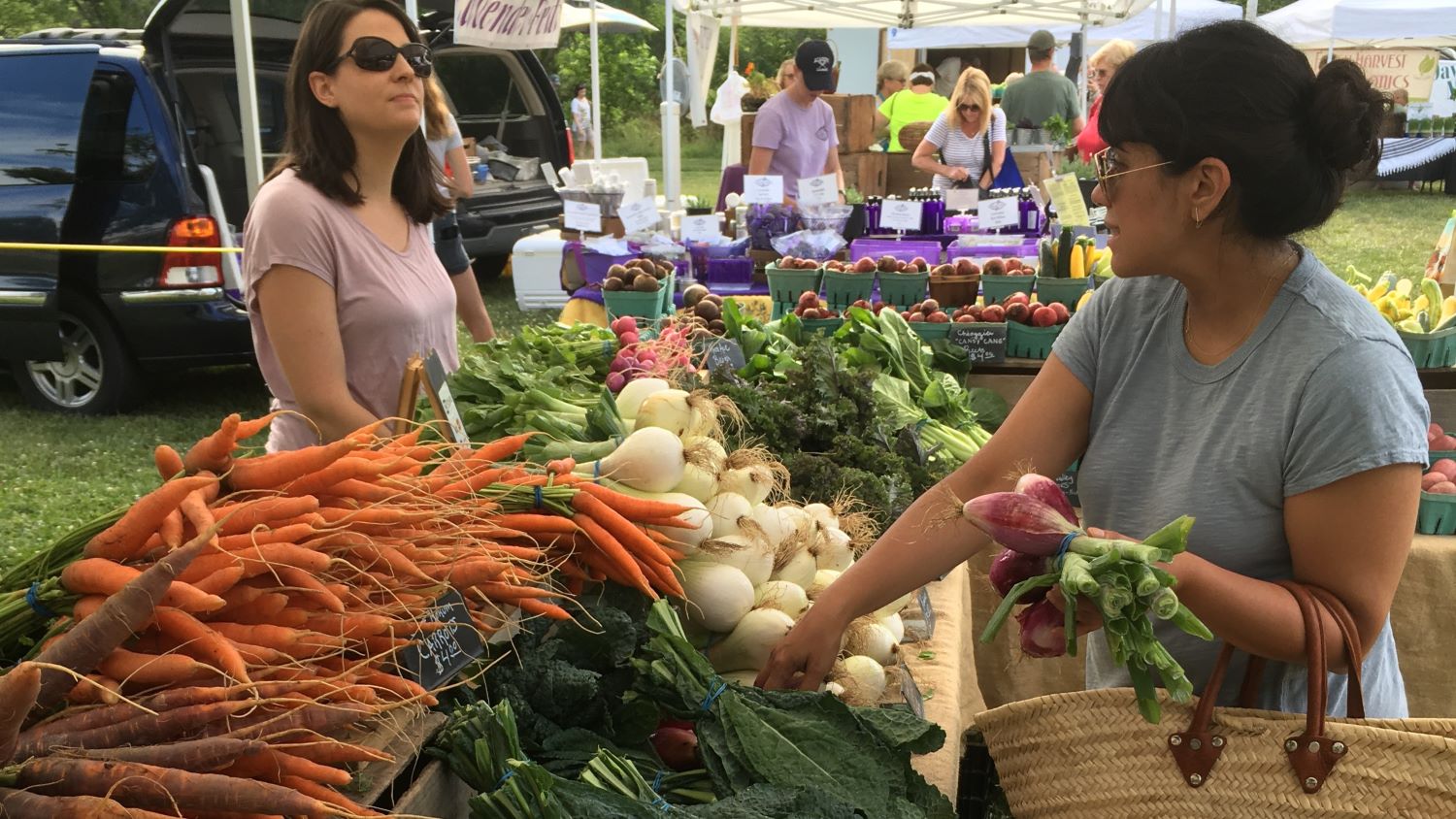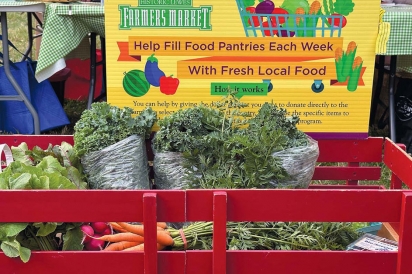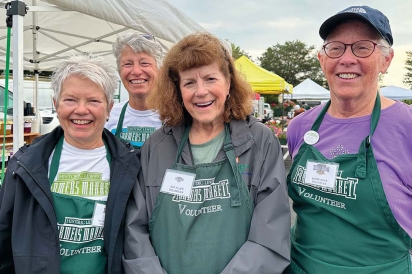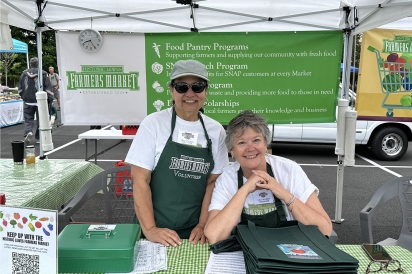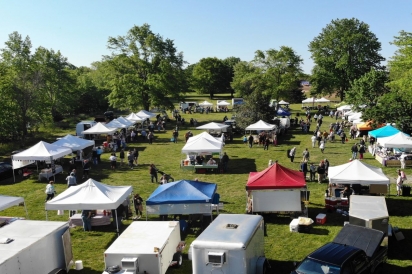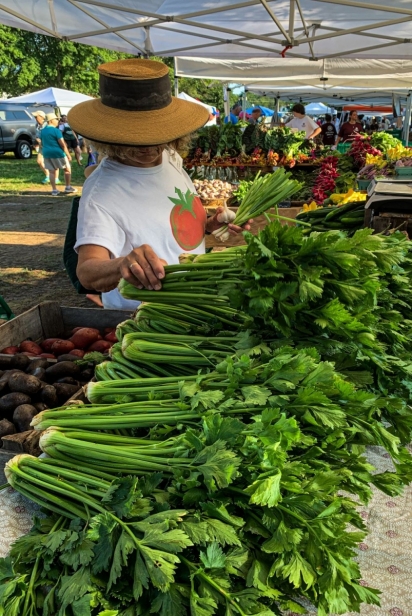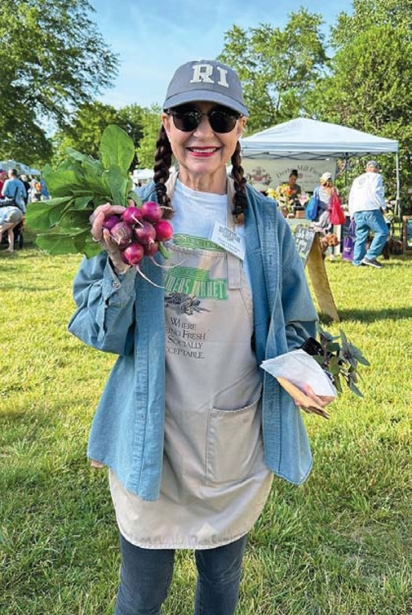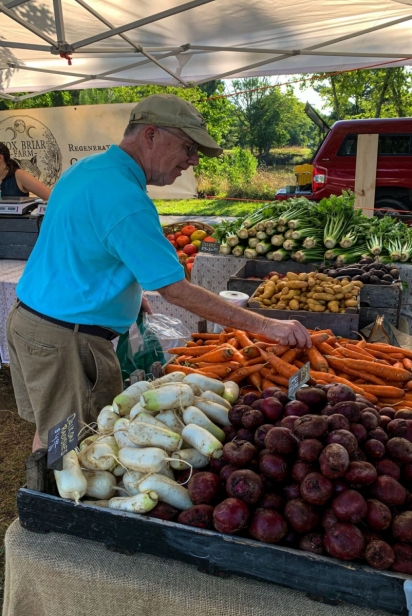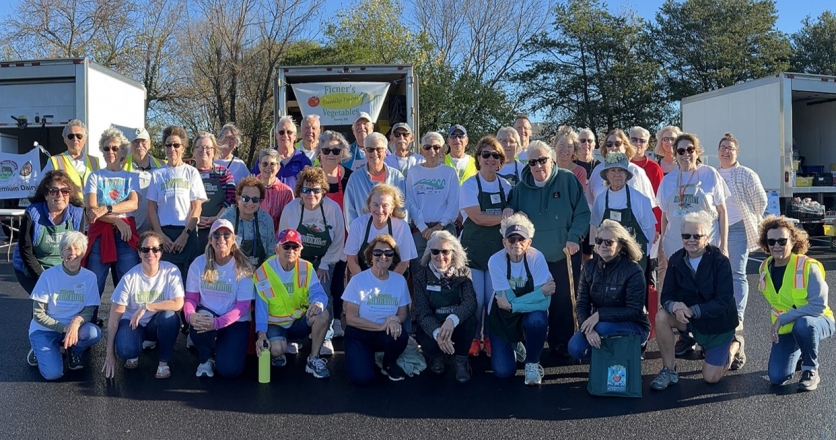The Broad Table: Historic Lewes Farmers’ Market
Photos by Mary Lu Pool for the Historic Lewes Farmers' Market, and Kathleen Moss
Close your eyes and imagine a farmers’ market customer. What does she look like? What is he wearing? Is she old or young? What does he drive to the market? All the lush vegetables, the creamy milk, the pasture-raised meats - who is it all for?
The Historic Lewes Farmers’ Market - a flagship of the the local farming movement - has done its best to make those questions impossible to answer. Regardless of age, race, or social class, the natural bounty of Delmarva’s agriculture is for everyone.
Before you roll your eyes, you should know that the Lewes Farmers’ Market has been taking active steps for years to make local produce available to as wide a demographic as possible. In particular, it has instituted and fostered programs designed to make farmers’ market produce available to disadvantaged persons who might not otherwise be able to afford it. According to the Food Bank of Delaware, almost one-in-ten residents of Sussex County are food insecure, including over 7,000 children. To combat this problem, the Lewes Farmers’ Market has instituted a number of programs to put quality, local produce into the hands of as many people as possible.
SNAP
The earliest example of the Historic Lewes Farmers’ Market efforts is the acceptance of SNAP (Supplemental Nutrition Assistance Program) benefits, which began in 2013. While there are other markets that allow customers to use SNAP, the Lewes Market goes above and beyond by matching SNAP funds up to twenty dollars per market. This money, given in the form of wooden tokens, comes from community donations. Besides providing extra funds to those that need them most, the matching program also incentivizes shopping from local growers because twenty dollars at the grocery store becomes forty at the market. This boost encourages the consumption of healthy food while simultaneously providing more income to our farmers. In 2016 the Lewes Market expanded to accept WIC (Women, Infants, and Children) benefits as well.
Gleaning
The term gleaning refers to a practice from the Hebrew Bible that saw widespread historical use in various cultures across the world. Within this system, poor members of a community were allowed by law to harvest and gather leftover crops, which had been discarded for one reason or another. Rather than watching this food rot in the field, farmers shared it with the needy to the benefit of all. Although gleaning might sound like a relic from the past, it continues to be a valuable and ongoing process, though its specific implementation has evolved.
Many farmers’ markets implement a form of gleaning, and the Historic Lewes Farmers’ Market is no different. During the last half-hour of the market, volunteers will visit each vendor’s stand to see if the seller has any leftover produce that it would be willing to contribute. All donated produce is then sent to Casa San Francisco, a Milton-basted charity with an emergency shelter and food pantry. This process makes particular sense for fruit and vegetable vendors whose products might otherwise be composted. As of 2023, the market has gleaned over $79,000 in produce for Casa San Francisco.
Gleaning reduces food waste and helps to feed those who otherwise could not afford it. If gleaning sounds appealing, you do not have to be a farmer, market vendor, or Lewes resident to participate. Consider volunteering with the Society of St. Andrew, an interfaith charity specifically dedicated to the gleaning tradition. The Society of St. Andrew established a Delmarva branch in Salisbury, Maryland in 2022 to coordinate activities across the peninsula.
Food Purchase Pantry Program
While gleaning relies on the generosity of farmers, the Historic Lewes Farmers’ Market Food Purchase Pantry Program allows market customers to give as well. In 2020 the COVID-19 crisis disrupted the food donation supply chain during a time of rising unemployment and food insecurity. In response, the Lewes Farmers’ Market partnered with Epworth United Methodist Church to support their food pantry in Rehoboth Beach. This program encouraged farmers’ market customers to purchase produce directly from farmers to be donated to local pantries and shelters. Customers can pick specific items or simply donate a sum, which the vendor can apply as he or she sees fit. For instance, a customer buying a lettuce head could purchase a second one for donation, or she could give the farmer an extra five or ten dollars to be allocated to the food purchase program. Again, this process benefits both the needy and local growers, since farmers are financially compensated for all the produce donated. During the 2022 market season alone, customers donated more than $38,000 of food for pantries across Sussex County.
Farm to Community Program
For its most recent and largest charitable endeavor, the Historic Lewes Farmers’ Market is working directly with the Delaware Department of Agriculture. After receiving a USDA grant, the state Department of Agriculture awarded the Lewes Market $420,000 to fund its Farm to Community program. The market uses this money to purchase meat, eggs, milk, and vegetables directly from small farms across Delmarva and then convey them to food pantries throughout Sussex County. Although the operation is still in its infancy, the HLFM’s Farm to Community program is already providing fresh, local, healthy food to over 3,000 needy people every week via thirteen separate pantries.
The Big Picture
From matching government benefits to distributing local produce to food banks, the Historic Lewes Farmers’ Market is clearly engaged in good work. But they are certainly not the only ones helping to feed the poor. A number of Delmarva markets have taken steps in this direction as well. If you live outside Sussex County, check with your local farmers’ market to see whether they have a gleaning or donation practice. If not, encourage them to start. Something as simple as collecting unsold food in a little wagon at the end of the market could make a real difference determining whether or not one of your neighbors goes hungry. If you do visit the market in Lewes, consider donating to the Food Pantry Program alongside your regular market purchase.
There is always more work to be done. Even with tremendous efforts by local organizations, food insecurity numbers provided by the Food Bank of Delaware still dwarf the aid being given. This reality is not meant to diminish their work or to encourage despair. Rather, the knowledge of the great need here in our own communities helps to inspire each of us to do what we can to contribute to the cause. Hopefully, more farmers’ markets across the region will adopt models similar to those instituted in Lewes, and together we can ensure that Delmarva’s natural bounty can serve to nourish us all.


